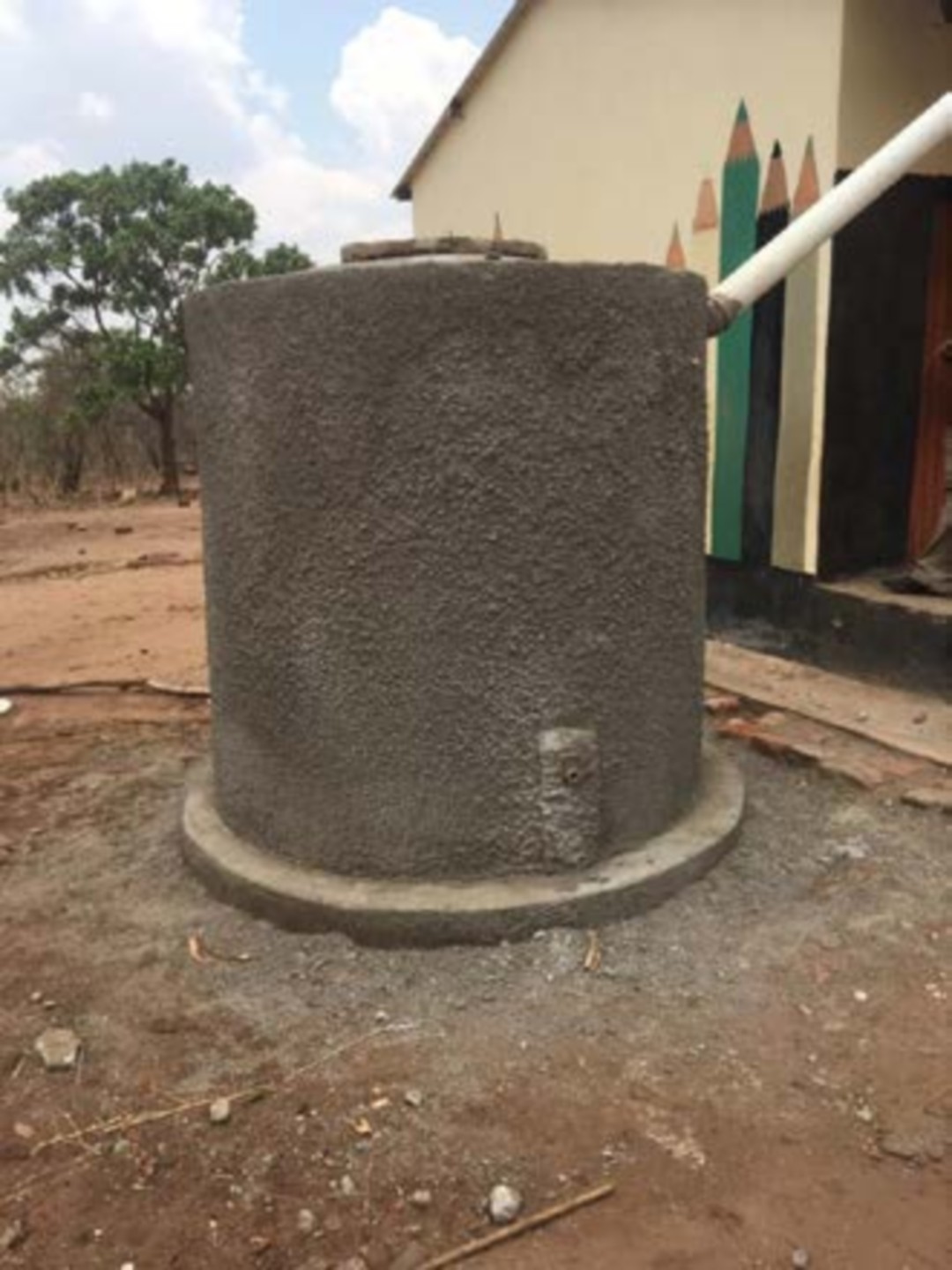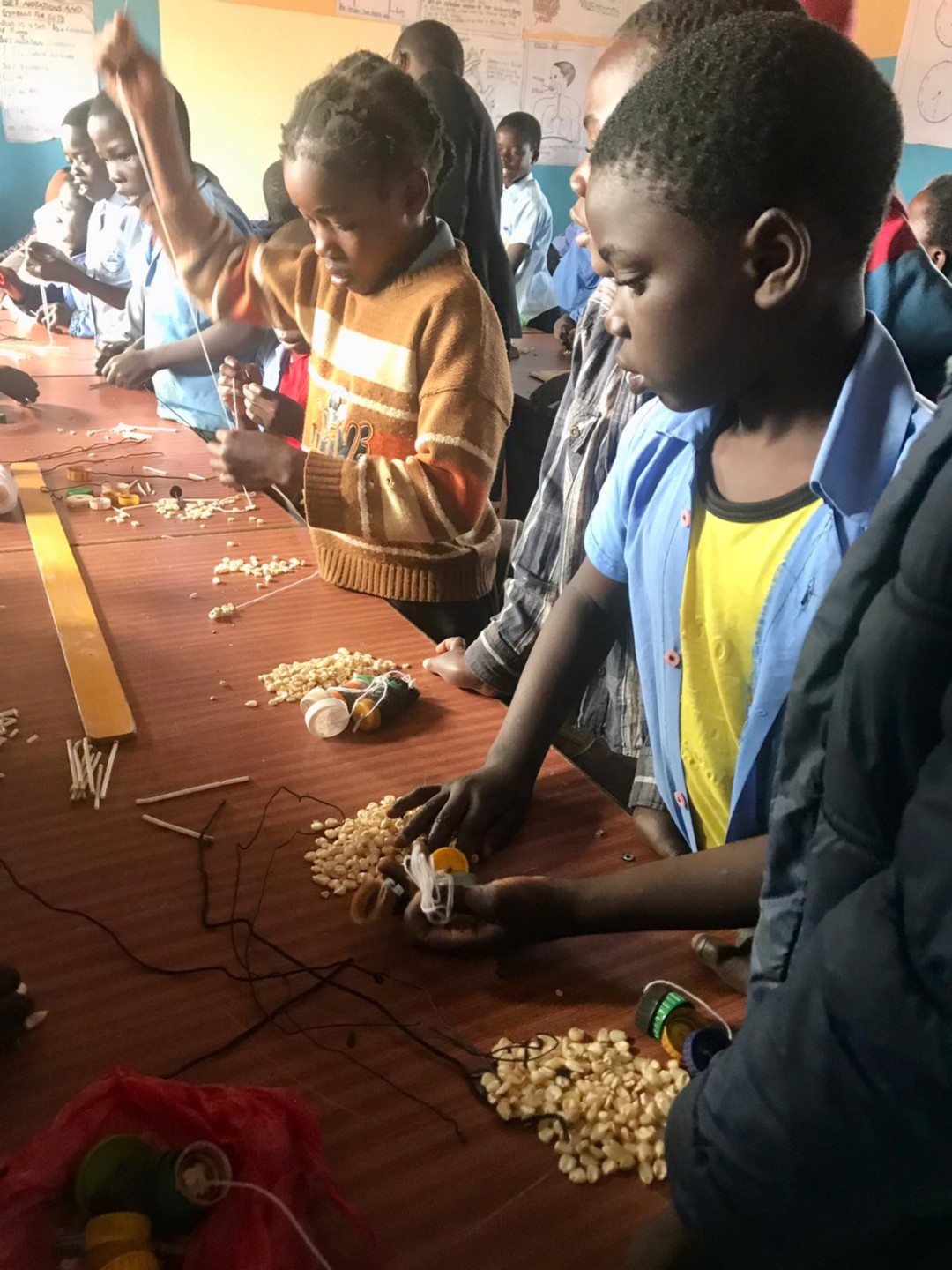Setting students up for success
The project provided a suite of wrap-around services complimentary to Impact Network's "eSchool 360" model supporting students from early childhood to secondary school and providing them with 21st Century skills and a pathway to lifelong learning. Two learning centers were constructed and equipped with furniture and supplies by "scthe end of 2020. They provided a multi-purpose room for Early Childhood classes (or overflow classes), and libraries to foster a love and passion for reading across the schools but also served as an auditorium for student assemblies and extra-curricular programs. In 2021, ECE classes started across eight schools for 400 children, and these classes continued in 2022 with over 420 students enrolled (61% female and 39% male). Early 2022, “school support kits” were offered to 120 secondary school children. While school fees had been abolished, the kits eased the financial burden on families and removed some of the remaining obstacles to school enrollment. 15,000 trees have been planted to date, and Impact network held a Go Green Day, a fun-filled day focused on combating the effects of climate change and successfully integrating upcycling, conservation, and climate education for the students. Two rainwater harvesting thanks that hold 3’500 liters were constructed in community schools that lacked a water source in close proximity. The November rains and the water harvester brought joy to the communities and schools. The schools now able to access water for hand washing, cleaning the classrooms and toilets with ease.
Impact Network is an international non-profit organisation founded in 2009. It aims to provide high quality e-learning solutions in rural Africa. Its eSchool 360 system was developed as a way to sustain high quality education for less than $3 a month per student. It provides locally-hired teachers with a tablet, projector and training to deliver e-learning lessons effectively.
News
Five new projects validated in October and December 2019
7 February 2020
The Addax and Oryx Foundation granted funding for five new projects at its October and December Board meetings.Holistic support for students
28 February 2023
This project aims to provide a suite of wrap-around services complimentary to Impact Network's "eSchool 360" model that will support students from early childhood to secondary school and provide them with 21st Century skills and a pathway to lifelong learning.Three projects recently completed
28 July 2023
Three projects in Tunisia, Uganda and Zambia have successfully come to an end.Type
Education / EnvironmentDuration
January 2020 - December 2022 ( extended to July 2023)Location
ZambiaWith whom
Impact Network
Website
















Zambia
Population
17 million (2017)
Per Capita Income
USD 1,290/year (2017)
Poverty rate *
54% (2015)
Literacy rate
83% (2016)
Human Development Index
144th out of 189 countries (2018)
Zambia has experienced political stability since its independence in 1964 together with a decade of rapid economic growth (average annual growth 6.4%). This growth has not translated into significant poverty reduction, with 54% of the population living under the poverty line and 42% living in extreme poverty. Significant challenges remain in addressing maternal mortality (224 deaths/100,000 live births), preventing new HIV infections, secondary school education, increasing access to clean water and sanitation, and sustainable environmental development. Food insecurity and undernutrition need to be addresses. Farmers practice subsistence-style farming and rely heavily on seasonal rains, leaving them vulnerable to unpredictable weather patterns.
Sources: World Food Program, UNICEF, World Bank, 2016 Human Development Report, Human Development Indices and Indicators (2018 Statistical Update)
*The percentage of the population living below the national poverty line.